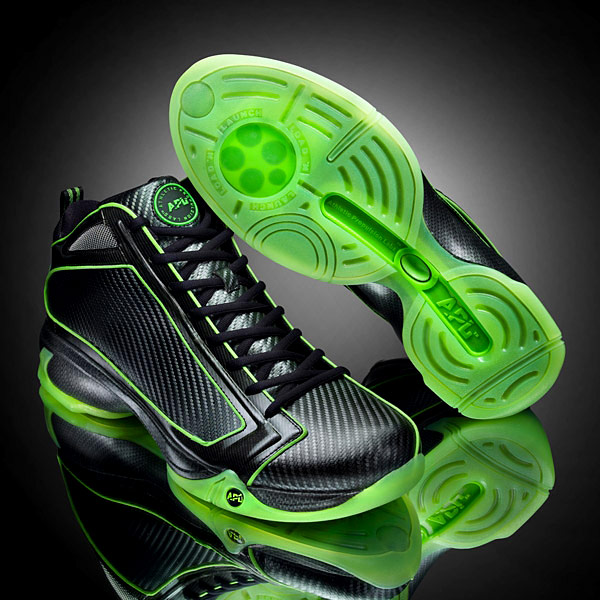NCAA Battling The Latest Performance Enhancing…Shoe?
Posted by nvr1983 on October 21st, 2010When news broke on Tuesday about the NBA banning a new pair of basketball shoes produced by Athletic Propulsion Labs, like most college basketball fans, we asked the obvious question: What will the NCAA do?
First, a little background on the shoes:
- The obvious question for every weekend warrior: How much do they cost? $300. At the present time you can only get them at APL’s official site or at Modell’s in Times Square at the corner of West 42nd Street and Broadway Avenue.
- The company’s co-founders, Adam and Ryan Goldston, walked on at USC for both basketball (Adam’s profile and Ryan’s profile) and football although we can’t find any reliable statistics for either of them while at USC.
- They claim that their product makes people jump higher through “a revolutionary patent-pending propulsion device” (the Load ‘N Launch) that can increase an athlete’s vertical by up to 3.5 inches.
- Although they don’t have any official endorsements the brothers claim that many NBA players expressed interest in the shoes, but they can’t name names because those players have shoe contracts. [Ed. Note: We are not sure what they mean by “expressed interest” because we are sort of interested in the shoes, but that doesn’t mean we would wear them. Ok, maybe we would. If APL sponsors us.]
- From a recent interview: Their father worked at Reebok, LA Gear, and Converse and they claim that they were involved in testing the first L.A. Gear Lights. [Ed. Note: RTC’s editorial staff did not return calls questioning whether they ever owned a pair of L.A. Gear Lights.]
This is hardly the first time that the use of performance-enhancing shoes has come into question as it happened most notably with Spira’s WaveSpring technology that Spira claimed the USATF, track and field’s national governing body, banned from competition although events as prestigious as the Boston Marathon did not disqualify athletes who won while wearing the “banned” shoes and there is some controversy if the shoes ever were actually banned. In this case, however, it does not appear to be only an act of self-promotion as the NBA as has its own press release on the issue.
The question as to what the NCAA would do cannot be clearly answered by looking at historical precedents. The two most pertinent examples are the NCAA’s policies on performance-enhancing drugs and the use of a performance-enhancing piece of equipment.










































